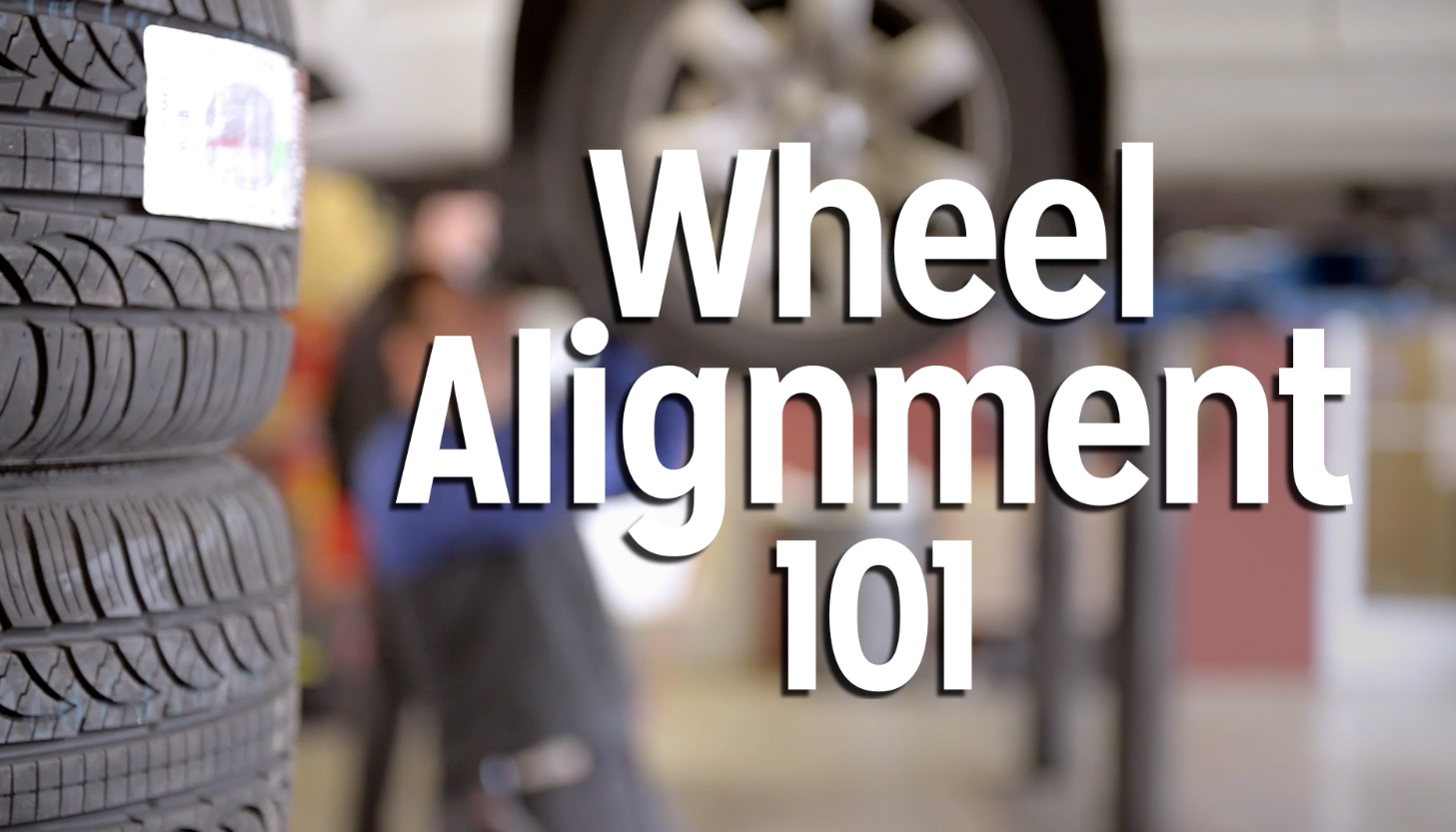To ensure you receive the best service possible,
please enter your zip code below:

Have you ever been out for a drive on a nice, smooth, evenly graded road, only to have your vehicle start behaving like the pavement is crumbling beneath you? Maybe your tires start to squeal, your steering feels loose, your steering wheel sits off-center even though you’re driving straight, or your vehicle vibrates like a malfunctioning massage chair.
These could all be signs that your wheel alignment is out of whack — and if left unchecked, they could leave you stranded roadside. In this guide to wheel alignment, you’ll learn what an alignment is, how it affects your suspension, common signs and symptoms to watch out for, the difference between an alignment and tire balancing, and, finally, how often you should get your tires aligned so that you can spend more time enjoying your drive rather than worrying about these rough-road headaches.
Care for your vehicle...keep your car aligned with help from AAA.
Find a location
A wheel or tire alignment is the process of adjusting your vehicle’s suspension angles to ensure optimal contact between your tires and the road, while also centering the steering wheel for proper straight-line driving.
You can tell if your vehicle’s wheels are properly aligned if it can drive down a road in a straight line without veering to the left or the right. When bringing your vehicle into a repair facility, consider two types of alignments: two-wheel and four-wheel.
Three different angles are adjusted during an alignment to ensure maximum stability, control, safety and tire longevity.
These angles are camber, caster and toe. They are always measured and adjusted together because even a minuscule mistake when adjusting one of these angles could radically affect the other two.
Before discussing how tire alignment affects your vehicle’s suspension, it is important to clearly understand what it is and how it works in relation to your car’s body and wheels.

A vehicle’s suspension is made up of a series of springs, shock absorbers, control arms and connection components that secure the wheels to your vehicle’s frame.
The purpose of your suspension is to soften the impact of bumps, maintain tire contact with the road and assist with vehicle stability and controllability no matter the terrain or operating speed.
Now that you have a basic understanding of your vehicle’s suspension and what it does for your ride, understanding how your alignment affects it will be a bit easier.

If you are driving and notice any of the issues listed below, it may be time to check your alignment before your vehicle rattles and wears away its suspension.
Then it may be time to check your alignment before your vehicle rattles and wears away its suspension. According to Consumer Affairs, suspension costs can run as little as $150 and well over $1,000, depending on what kind of work needs to be done, while the cost of an alignment can range from $100-$168 for a four-wheel alignment.
By taking your vehicle in for an alignment annually, you could reap financial savings and spare yourself the headache that a damaged suspension is sure to cause. It is also wise to consider an alignment if you get new tires, experience a collision or hit a pothole or other road debris, as these situations could affect your alignment.

Wheel alignments are not to be confused with wheel balancing. These are two completely different procedures. Whereas the former is related to ensuring the optimal performance angles of your tires, the latter is predominantly focused on equalizing the weight distribution of a mounted tire and wheel by adding weights to prevent wobbling at high speeds.
These are often confused because the services are typically done in tandem, they are often mentioned together by mechanics, and they both involve your wheels.
Now that you have all this information, it is important to be vigilant on the road. If you are rocking out to the radio, enjoying a smooth drive, and you start experiencing strange vibrations or something pulling you in a direction you do not want to go, that is not adventure calling; it is your car trying to tell you something is wrong.
Staying on top of alignments and being proactive about tire and suspension care will keep your wallet happy while ensuring a reliable, smooth ride that keeps you from being stranded on the roadside.
A: Watch for signs like your car pulling to one side, uneven tire wear or an off-center wheel.
A: If your car has a solid rear axle, a two-wheel alignment might be fine (if available). But most modern vehicles benefit from a four-wheel alignment.
A: Have them checked once a year and after installing new tires or hitting something hard, like a pothole.
A: Yes, misalignment increases rolling resistance, making your engine work harder and reducing fuel efficiency.
A: Alignment corrects the direction your tires point; balancing ensures the wheel’s weight is evenly distributed.
A: You can, but it’s risky. It wears down tires faster, affects steering and safety, and can lead to expensive suspension damage.
Caring for your vehicle
AAA can help you keep your car’s wheels and tires in top form. AAA Members receive a free vehicle maintenance inspection upon request with any paid service at a nearby AAA owned Car Care center or AAA Approved Auto Repair facility, a 36-month/36,000-mile guarantee on repairs at AAA owned Car Care locations, and a 24-month/24,000-mile warranty at AAA Approved Auto Repair facilities. Members also receive a 10% discount on repair labor (save up to $75).